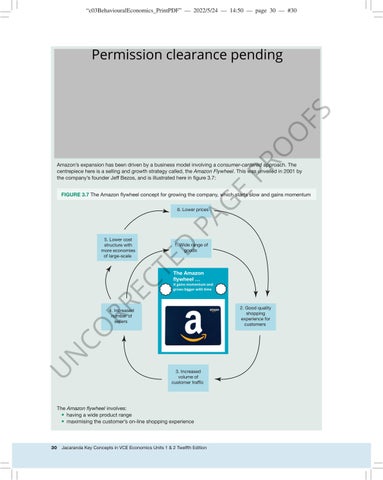“c03BehaviouralEconomics_PrintPDF” — 2022/5/24 — 14:50 — page 30 — #30
PR
O
O
FS
Permission clearance pending
E
Amazon’s expansion has been driven by a business model involving a consumer-cantered approach. The centrepiece here is a selling and growth strategy called, the Amazon Flywheel. This was unveiled in 2001 by the company’s founder Jeff Bezos, and is illustrated here in figure 3.7:
G
FIGURE 3.7 The Amazon flywheel concept for growing the company, which starts slow and gains momentum
TE
D
1. Wide range of goods
CO RR EC
5. Lower cost structure with more economies of large-scale
PA
6. Lower prices
The Amazon flywheel …
It gains momentum and grows bigger with time
2. Good quality shopping experience for customers
U
N
4. lncreased number of sellers
3. Increased volume of customer traffic
The Amazon flywheel involves: • having a wide product range • maximising the customer’s on-line shopping experience
30
Jacaranda Key Concepts in VCE Economics Units 1 & 2 Twelfth Edition





















































